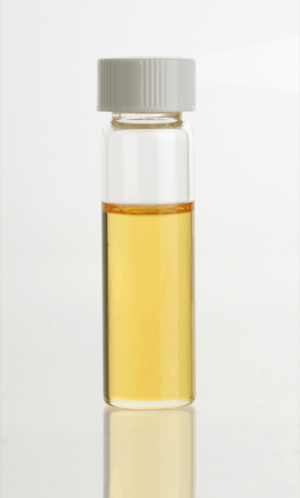Cedar oil facts for kids

Cedar oil, also known as cedarwood oil, is a type of essential oil. It comes from different kinds of conifer trees. Most of these trees belong to the pine or cypress families. People make this oil from the leaves of the trees. Sometimes, they also use the wood, roots, and stumps left after logging. Cedar oil has many uses. You can find it in art, industry, and perfumes. Even though oils from different trees might be a bit different, they all help keep pests away.
What is Cedar Oil and Where Does it Come From?
Even though we call it cedar oil, most of the important oils actually come from distilling wood. They are often from different kinds of junipers and cypress trees. These trees are part of the Cupressaceae family. True cedar trees are in the Pinaceae family. People also get similar oils in small amounts. They get them from the wood, roots, and leaves of plants like Platycladus, Cupressus, Taiwania, and Calocedrus.
The cedarwood oil used by ancient people, like the Sumerians and Egyptians, came from the Cedar of Lebanon. This tree is a true cedar and grew in the mountains of the Middle East. Sadly, most of the old Cedar of Lebanon forests are gone now. So, today, no one makes commercial oil from this tree.
One important part found in many cedar trees is called cedrol. The amount of cedrol in a cedar tree affects how well it keeps insects away. Long ago, the ancient Egyptians used cedar oil when they prepared bodies for burial. This helped to protect the bodies from insects.
The FDA says that cedarwood oil is generally safe. It can even be used as a preservative in food. The United States EPA also believes it is safe. They say that people who use registered cedarwood oil products as directed are not likely to have harmful effects. This means it's safe for people and the environment when used properly.
How is Cedar Oil Used?
Cedarwood oils all have a special woody smell. This smell might change a little as the oil dries. The raw oils are often yellowish or darker. Some, like Texas cedarwood oil, are thick and can form crystals.
These oils are used in many products. You can find them in soap perfumes, household sprays, and floor polishes. They are also used in insect repellents. A small amount is even used in microscope work to help see things clearly.
All commercial cedarwood oils contain similar chemical compounds. These include cedrol and cedrene. They add to the oil's smell. They are also useful for the chemical industry. These compounds can be changed to make other things that smell nice. So, the oils are used directly and as a source for these chemicals.
Long ago, the ancient Sumerians used cedarwood oil as a base for their paints. They would grind cobalt compounds to make a blue pigment. They could get green from copper, yellow from lead antimonate, black from charcoal, and white from gypsum.
Today, cedarwood oil is often used for its nice smell. It's popular in aromatherapy. It can also make old cedar furniture smell fresh again. Cedarwood oil is a good insect repellent. You can put it directly on your skin or find it in sprays, candles, and other products.
In India, oil from the deodar cedar tree has been shown to kill insects and fungi. This means it could help protect spices from going bad during storage.
Ancient Egyptians had different ways to prepare bodies for burial. One method used cedarwood oil. This was a less expensive way than removing all the internal organs. In this method, cedar oil was put into the body. Then, the body was placed in a special salt called natron. After a certain time, the cedarwood oil, which had dissolved the soft organs, was released. The natron also helped to preserve the skin and bones.
Before the 1940s, cedarwood oil was very common in light microscopy. It was used with special lenses called oil immersion objectives. Sometimes, it is still used today to make emeralds look clearer.
See also
 In Spanish: Aceite de cedro para niños
In Spanish: Aceite de cedro para niños

